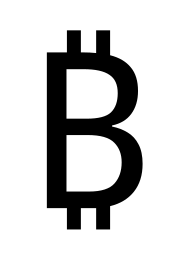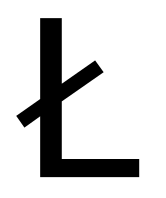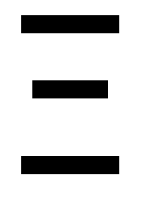Bitcoin vs. ₿itcoin: Crypto Signs and Symbols
Are currency signs the key to recognition?

Share this article
In theory, it should be easy to choose a cryptocurrency sign. Countless fiat currencies have popularized a single style — a letter with one or several strike-through bars, which should represent the stability of the currency. It’s a design that has been used all around the world: signs for the euro, the pound, the yen, the franc, and the dollar can all be instantly recognized by almost anyone.

Yet it’s not so easy to follow that style in the cryptocurrency world. Hundreds of different crypto projects are competing over similar identities, which led many parts of the industry to overlook all but the most popular symbols. Nevertheless, many crypto projects are pushing for recognition with various strategies — here’s who they are.
Bitcoin Borrowed a Currency Sign

Naturally, ₿ is used by exchanges and market aggregators, but it has been integrated with mainstream software as well. The sign has been added to Microsoft Excel and Google’s iOS Keyboard. These additions may seem trivial, but they are a sign of growing recognition.
However, the road to a standard symbol was a long one. Until recently, Bitcoin used the Thai baht symbol (฿) as its currency sign. This didn’t cause a lot of confusion, given that Bitcoin-to-baht conversions are rare. In fact, the old symbol is still in use today on many minor websites, such as Bittybot, Predictious, and LikeForex.
Other projects that have borrowed real-world currency symbols handle the problem in creative ways. Tether uses Mongolia’s togrog sign (₮), but combines it with a currency code, as in USD₮. Cardano, meanwhile, uses Argentina’s austral sign (₳), which is not much of an issue — the original currency has been defunct for two decades.
Litecoin Uses a Faux Currency Sign

There are easier ways to avoid overlap. Plenty of characters look very similar to currency signs, even though they have never actually been used in that way. Litecoin, for example, has laid claim to Ł, a letter found in Polish and West Slavic alphabets.
Since Litecoin is less popular than Bitcoin, the Ł symbol is not quite as widely used. Most sites simply use the ticker symbol LTC to represent Litecoin amounts. However, a few sites use the Ł character on their market pages, including the market aggregator CryptoCompare.
Other coins have managed to find similar symbols. Lisk uses Ⱡ, Dogecoin uses Ð, and Reddcoin uses Ɍ. Hedera Hashgraph uses ℏ for its coin, HBAR, and some Bitcoin users employ Ƀ as an alternative to the baht symbol. None of these symbols have any currency-related uses outside of crypto, so this is a sensible and clear approach.
Ethereum Uses a Strokeless Symbol

Though it is not exactly mainstream, the Ξ symbol is used fairly often in the Ethereum ecosystem. The market aggregator CoinGecko, the collectibles marketplace OpenSea, and the DApp directory DAppReview are among the many websites that use Ξ to represent Ether amounts.
Other currencies use strokeless symbols as well. Monero uses ɱ, Tezos uses ꜩ, and Zcash uses ⓩ. Though these symbols are appealing and stylized, observers from outside the crypto world may not instinctively recognize them as currency signs — something that critics have previously warned of in discussions of alternative Ethereum symbols.
Stellar Has an Original Design
Some cryptocurrencies are taking their symbols in fresh directions. Stellar designed its own currency sign last year, which is reminiscent of the dollar sign and the rings of Saturn. Or, as Stellar describes it, it is “planetary, not to mention coin-like.”
Unfortunately, the symbol is not widely used outside of Stellar’s own website, marketing materials, and merchandise. Since the symbol does not yet have a corresponding Unicode character, it cannot be displayed as text. Sites that want to use the symbol must rely on an image, which is not always practical.
Despite the drawbacks, other coins have attempted original designs as well. MakerDAO introduced a new Dai symbol as part of a recent upgrade, and the XRP community has two competing symbols on the table. It may be difficult for these projects to standardize their signs, but when they do, they should have very strong brand identities.
What Does It Take to Succeed?
It’s hard to quantify what is the impact of various design styles on popularity. Cryptocurrency symbols that are shown prominently on a few major websites may not be widely used by individuals on a daily basis. On the flip side, charged debates between passionate individuals do not guarantee that exchanges and market aggregators will recognize a symbol.
However, a few factors seem to be important. Projects generally seek out symbols that are clearly currency-related, designs that resemble an existing logo, and characters that are already found within Unicode. Most of these things are true whether a symbol is chosen by a community, by developers, or designed by an outside contractor.
Though each cryptocurrency project puts a lot of thought into its decisions, practical matters should not be ignored. High-ranking and long-established coins tend to be more successful all around. Naturally, successful coins usually have more recognizable signs by default — regardless of the reasoning that led to that point.
Share this article
